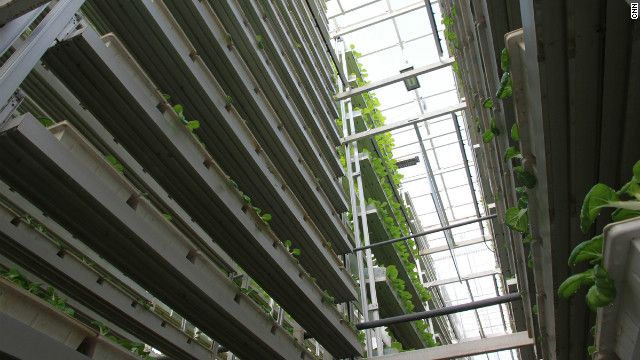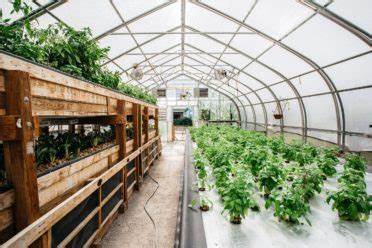
Vertical Farming and the Reimagining of Urban Landscapes: Addressing Global Challenges
Introduction
Vertical farming is a revolutionary concept that aims to maximize food production in urban areas by utilizing vertical space. This article explores the historical background, key concepts, benefits, technological innovations, environmental sustainability, case studies, current trends, challenges, and future outlook of vertical farming. By reimagining urban landscapes, this innovative approach offers solutions to food security, sustainability, and urbanization challenges.
Historical Background
Vertical farming has its roots in the early 20th century, envisioning cities with agricultural skyscrapers. Over time, urban landscapes have shifted from predominantly industrial to more diversified and sustainable spaces, highlighting the need for integrating agriculture into urban areas.
Key Concepts and Definitions
Vertical farming involves growing food in stacked layers or vertically oriented surfaces, making efficient use of limited land and resources. The integration of agriculture into urban areas reimagines the traditional landscape, creating sustainable and self-sufficient communities. Key terms related to sustainable agriculture, hydroponics, aeroponics, and aquaponics are integral to understanding vertical farming’s principles.

Main Discussion Points
Point: Benefits of Vertical Farming and the Reimagining of Urban Landscapes
Vertical farming offers increased food production capacity, contributing to food security amidst a growing global population. It optimizes land use by utilizing vertical space, allowing for higher crop yields in a smaller footprint. Moreover, this approach reduces transportation and carbon emissions associated with long-distance food supply chains and creates job opportunities.
Point: Technological Innovations and Design Considerations
Advanced lighting systems, automation, and precision farming techniques enhance the efficiency and productivity of vertical farming. The architectural design of vertical farming infrastructure ensures optimal use of space, while the integration of renewable energy sources reduces the environmental impact.
Point: Environmental Sustainability and Resource Management
Vertical farming emphasizes water conservation through efficient irrigation systems, minimizing water wastage. Nutrient and waste management techniques ensure sustainability by recycling resources within the system. Additionally, vertical farming reduces the dependence on pesticides, promoting healthier and safer food production.

Case Studies or Examples
Prominent examples of successful vertical farming projects include AeroFarms in New Jersey, which uses aeroponic technology to grow leafy greens and herbs. Sky Greens in Singapore utilizes vertical farming on rotating towers to maximize sunlight exposure. Rooftop gardens in New York City and urban farming in Detroit demonstrate the successful integration of agriculture into urban landscapes.
Current Trends or Developments
LED lighting technology continues to advance, providing precise light spectrums for optimal plant growth in indoor farming environments. The integration of vertical farming in smart cities and urban planning strategies ensures sustainable food production alongside other technological advancements. Restaurants, grocery stores, and food retailers are increasingly adopting vertical farming to offer fresh and locally sourced produce.
Challenges or Controversies
High upfront costs and energy consumption are the primary challenges associated with vertical farming. Skepticism remains regarding its cost-effectiveness and scalability on a large scale. Additionally, concerns are raised about the potential loss of traditional farming practices and the impact on rural communities.
Future Outlook
With ongoing advancements and increased adoption, vertical farming has the potential to become mainstream and integrated into urban landscapes. It can play a critical role in achieving global food security and sustainable development goals by providing locally grown, nutritious food. Furthermore, vertical farming holds promise for space exploration and colonization, ensuring food production in extraterrestrial environments.

Conclusion
Vertical farming offers a promising solution to address global challenges such as food security, sustainability, and urbanization. By reimagining urban landscapes and utilizing vertical space, it maximizes food production capacity, conserves resources, reduces carbon emissions, and creates economic opportunities. Further exploration and research in this field are encouraged to unlock the full potential of vertical farming.
References
Despommier, D. (2010). The vertical farm: feeding the world in the 21st century.
Grewal, A. S., & Grewal, D. S. (2020). Vertical farming: a sustainable solution to address global food challenges. Agriculture and Food Security, 9(1), 1-15.
Kim, S. H., & Wetzstein, M. E. (2019). Vertical farming: a technological approach to sustainable urban agriculture. Sustainability, 11(18), 5084-5102.
Li, J., Zhang, C., & Liu, Z. (2020). Vertical farming system: a review on recent innovations and future perspectives. Journal of Cleaner Production, 256, 120486.




